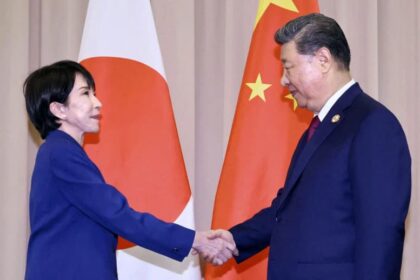China’s K Visa: A New Era for Young Science and Technology Talent
China is set to launch a groundbreaking new visa category—the K visa—on October 1, 2025, specifically designed to attract young science and technology professionals from around the world. This move, announced by the State Council and signed into law by Premier Li Qiang, marks a significant shift in China’s approach to international talent recruitment and its ambition to become a global leader in innovation and technology. The K visa aims to simplify entry, foster international collaboration, and make China a more attractive destination for emerging talent in science, technology, engineering, and mathematics (STEM).
- China’s K Visa: A New Era for Young Science and Technology Talent
- What Is the K Visa and Why Is It Important?
- Who Is Eligible for the K Visa?
- How Does the Application Process Work?
- What Can K Visa Holders Do in China?
- Why Is China Launching the K Visa Now?
- Potential Challenges and Considerations
- How Does the K Visa Fit into China’s Broader Talent Strategy?
- Tips for Prospective Applicants
- In Summary
What Is the K Visa and Why Is It Important?
The K visa is a new addition to China’s existing 12 ordinary visa categories, which include types for work (Z), study (X), business (M), tourism (L), and high-level talent (R). Unlike these traditional visas, the K visa is tailored for young professionals and recent graduates in STEM fields, offering them greater flexibility and fewer bureaucratic hurdles. The policy is part of a broader national strategy to prioritize science, talent, and innovation, and to position China as a magnet for global expertise.
This initiative comes at a time when China is actively streamlining its visa rules to promote international exchanges. By July 2025, China had established unilateral visa-free entry or mutual visa-exemption agreements with 75 countries, resulting in a surge of international visitors. In the first half of 2025 alone, foreign nationals made 38.05 million trips to and from China—a 30.2 percent increase year-on-year—with 13.64 million of those trips involving visa-free entries, up 53.9 percent from the previous year.
China’s Global Talent Drive
China’s push to attract young science and technology talent is part of its ambition to become a technological superpower by 2035. The government recognizes that innovation and scientific advancement require the participation of top-tier talent from around the world. By lowering barriers to entry and offering attractive opportunities, China hopes to compete with other major economies, particularly the United States, in the global race for STEM professionals.
Who Is Eligible for the K Visa?
The K visa targets “young science and technology talent,” a group broadly defined as:
- Graduates in STEM fields (science, technology, engineering, mathematics) from recognized universities or research institutions worldwide, typically holding at least a bachelor’s degree.
- Young professionals engaged in relevant education or research work at such institutions.
- Individuals under a certain age threshold—reports suggest an upper age limit of 40 to 45, based on similar Chinese talent programs.
Eligibility is based on age, educational background, and work experience. Notably, the K visa does not require applicants to have a job offer, invitation, or sponsorship from a Chinese employer or entity. This is a major departure from most other Chinese visa categories, which often require a local sponsor or employer to initiate the process.
Key Features of the K Visa
- Multiple Entries: K visa holders can enter and exit China multiple times during the visa’s validity period.
- Extended Validity and Stay: The visa offers longer validity and duration of stay compared to most other visa types, making it suitable for extended research, study, or entrepreneurial projects.
- Streamlined Application: The process is designed to be more convenient, with fewer documents required and no need for a local employer’s invitation.
- Broad Scope of Activities: Holders can participate in education, culture, science and technology exchanges, as well as entrepreneurial and business activities.
How Does the Application Process Work?
While detailed implementation rules and documentation requirements are expected to be published by Chinese embassies and consulates closer to the launch date, the general process is as follows:
- Meet the Eligibility Criteria: Applicants must be under the specified age limit (likely 40–45), possess a relevant degree from a recognized institution, or have significant experience in a leading research lab or high-level position.
- Prepare Supporting Documents: Proof of educational background (such as diplomas or transcripts), professional experience, and possibly a statement of purpose or research plan.
- No Employer Invitation Needed: Unlike work (Z) or business (M) visas, there is no requirement for a Chinese employer or entity to issue an invitation letter.
- Submit Application: Applications will be accepted at Chinese embassies and consulates worldwide. The process is expected to be more streamlined than other visa types.
- Await Approval: Once approved, the K visa will allow for multiple entries and extended stays in China.
Applicants are advised to prepare their documents early, stay updated on official announcements, and consult embassy websites for the latest guidelines.
Comparison with Other Countries’ Talent Visas
China’s K visa is part of a global trend where countries compete to attract top STEM talent. For example, the United States offers the H-1B visa for skilled workers and the O-1 visa for individuals with extraordinary ability, but these often require employer sponsorship and face annual quotas. South Korea and Japan have their own talent visa programs, typically requiring job offers or invitations and sometimes lengthy processing times. China’s K visa stands out for its streamlined process and lack of employer sponsorship requirement, making it particularly attractive to young, independent professionals and recent graduates.
What Can K Visa Holders Do in China?
K visa holders are permitted to engage in a wide range of activities, including:
- Participating in academic exchanges and research collaborations
- Attending conferences, workshops, and seminars in STEM fields
- Launching or joining startups and entrepreneurial ventures
- Engaging in cultural and educational exchanges
- Working in research labs, universities, or innovation hubs
This broad scope is intended to foster cross-border collaboration, knowledge transfer, and the creation of new scientific and technological breakthroughs within China’s rapidly growing innovation ecosystem.
Opportunities for International and Returning Chinese Talent
The K visa is open to both foreign nationals and Chinese citizens who have acquired foreign citizenship, making it a potential pathway for overseas Chinese talent to return and contribute to China’s development. Top Chinese universities and research institutions are already offering competitive salaries and bonuses to attract global researchers, and the K visa further lowers the barriers for international talent to participate in China’s innovation drive.
Why Is China Launching the K Visa Now?
China’s decision to launch the K visa is driven by several strategic objectives:
- Boosting Innovation: By attracting young, creative minds, China aims to accelerate its progress in cutting-edge fields such as artificial intelligence, biotechnology, quantum computing, and green energy.
- Competing Globally: As the United States and other countries tighten immigration policies or face political uncertainty, China is positioning itself as a welcoming alternative for global STEM talent.
- Filling Talent Gaps: China’s rapid economic growth and technological ambitions have created a high demand for skilled professionals, particularly in emerging industries.
- Enhancing International Collaboration: The K visa is designed to facilitate cross-border research, joint ventures, and academic exchanges, strengthening China’s ties with the global scientific community.
Broader Policy Context
The K visa is part of a series of reforms aimed at making China more accessible to international visitors and professionals. Recent years have seen the expansion of visa-free travel programs, mutual visa-exemption agreements, and the reopening of student visa applications after pandemic-related disruptions. These measures have contributed to a significant increase in international travel and exchanges, reinforcing China’s image as an open and dynamic hub for global talent.
Potential Challenges and Considerations
While the K visa represents a major step forward, its success will depend on effective implementation and ongoing support for foreign professionals. Key challenges include:
- Defining Eligibility: Clear and transparent criteria are needed to ensure that qualified applicants are not excluded or delayed by bureaucratic ambiguity.
- Integration and Retention: Attracting talent is only the first step; China must also provide a supportive environment for foreign professionals to thrive, including language support, cultural integration, and career development opportunities.
- Balancing Security and Openness: As with any immigration policy, there is a need to balance national security concerns with the benefits of openness and international collaboration.
- Avoiding Bureaucratic Delays: The promise of a streamlined process must be matched by efficient administration at embassies, consulates, and immigration offices.
Experts note that the practical impact of the K visa will depend on how these challenges are addressed and whether local pilot projects or additional incentives are introduced to attract and retain top talent.
How Does the K Visa Fit into China’s Broader Talent Strategy?
The K visa complements existing programs such as the Talented Young Scientist Programme (which brings researchers from Asia and Africa to China) and the Outstanding Young Scientists (Overseas) Fund Project (which targets top-level natural scientists and engineers). These initiatives, along with competitive compensation packages at leading Chinese universities and research institutes, are part of a coordinated effort to build a world-class innovation ecosystem.
China’s leadership has repeatedly emphasized the importance of talent in achieving national development goals. As one official put it at a recent press conference:
“China’s development requires the participation of talent from around the world, and China’s development also provides opportunities for them.”
This philosophy underpins the K visa and other talent policies, reflecting a long-term vision of mutual benefit and global cooperation.
Tips for Prospective Applicants
- Start Early: Begin preparing your documents well in advance of the October 1, 2025 launch date.
- Monitor Official Channels: Stay updated on detailed requirements and application procedures via Chinese embassy and consulate websites.
- Plan Your Stay: Consider opportunities in China’s major innovation hubs such as Beijing, Shanghai, Shenzhen, and Hangzhou, as well as emerging tech clusters in other regions.
- Network: Leverage academic, professional, and entrepreneurial networks to maximize your impact and integration in China’s science and technology community.
In Summary
- China will launch the K visa on October 1, 2025, targeting young science and technology professionals worldwide.
- The K visa offers multiple entries, extended validity, and a streamlined application process without the need for a local employer’s invitation.
- Eligibility focuses on young professionals (typically under 40–45) with degrees from recognized universities or significant research experience.
- K visa holders can engage in education, research, entrepreneurship, and cultural exchanges in China.
- The initiative is part of China’s broader strategy to become a global leader in innovation and technology by attracting top-tier international talent.
- Success will depend on clear eligibility criteria, efficient administration, and ongoing support for foreign professionals in China.












